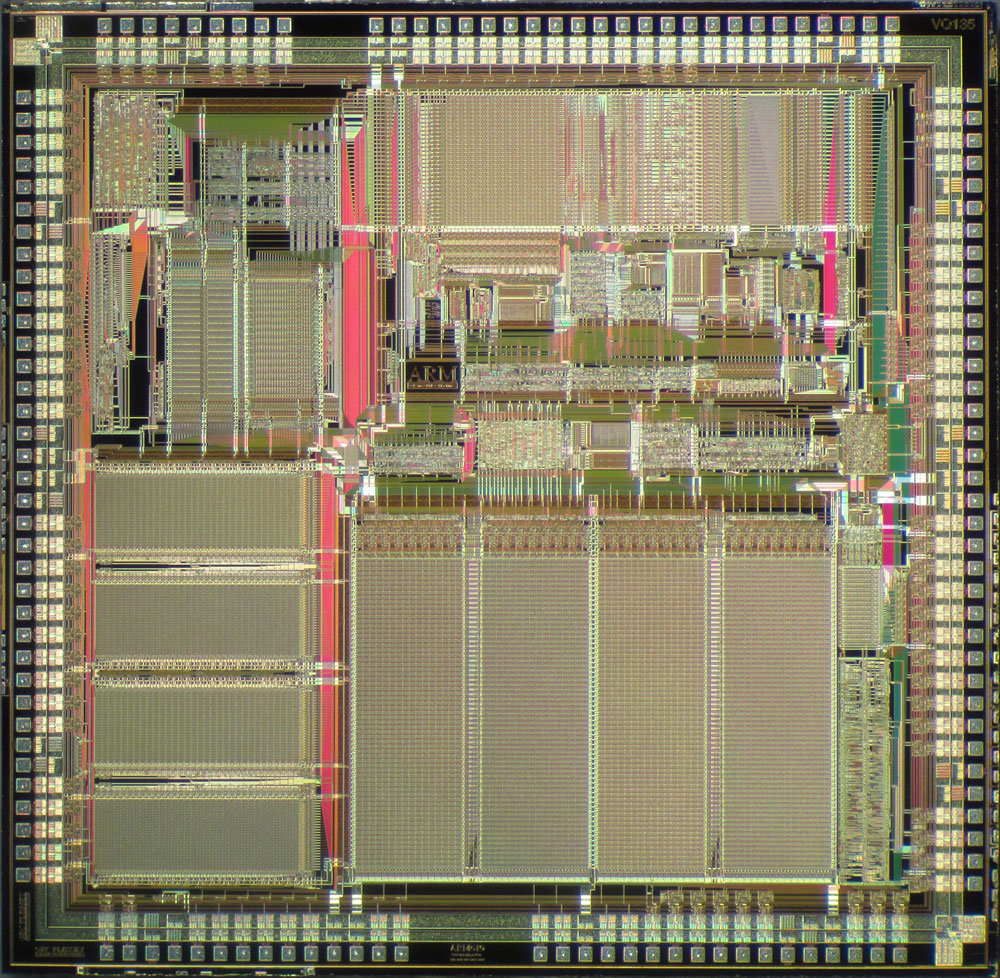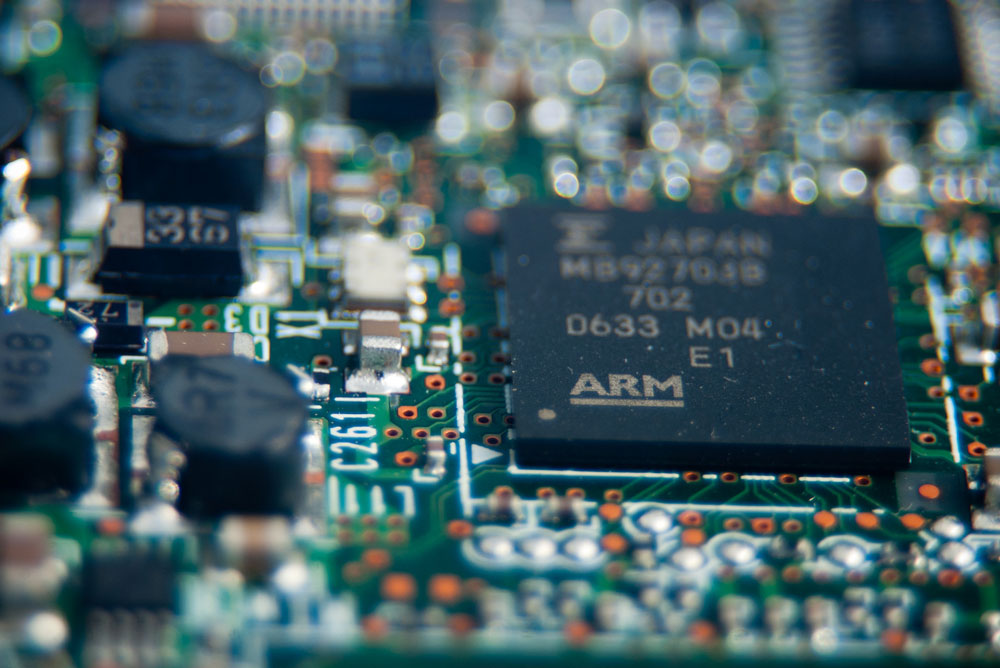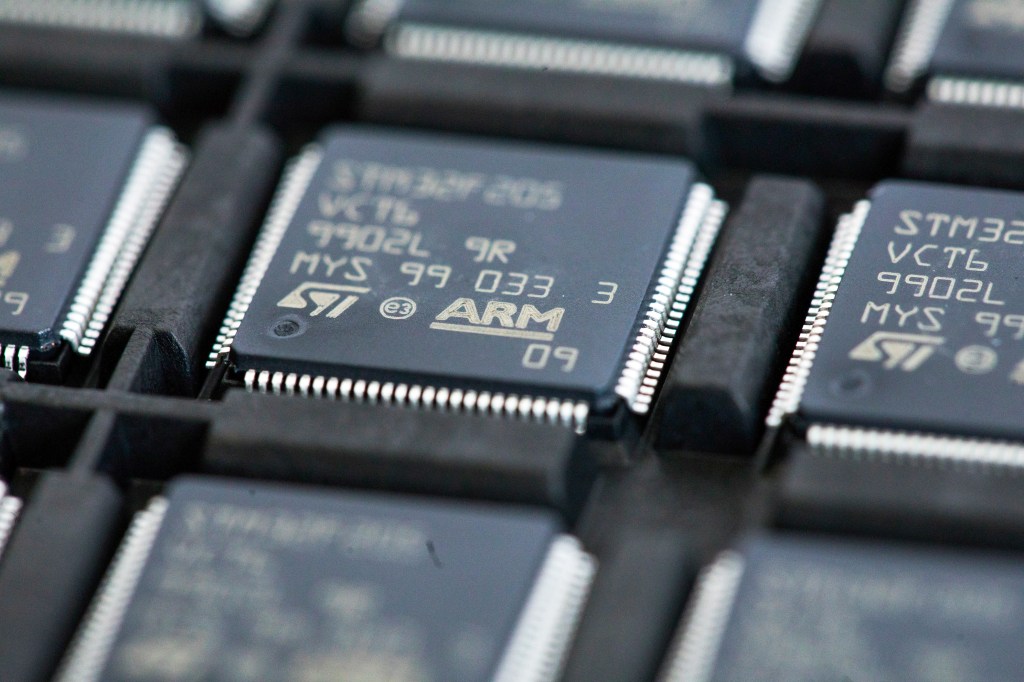A version of this post originally appeared on Tedium, a twice-weekly newsletter that hunts for the end of the long tail.
You may have heard something about a semiconductor chip shortage in the news recently—driven in part by a shortage of display driver chips, which automobiles have come to increasingly rely on because of their in-dash displays, on top of everything else—from TVs to phones to airplanes.
Videos by VICE
When car demand slowed, chip demand rose elsewhere—and the semiconductor industry wasn’t prepared for that.
But another factor is the geographic domination of one particular part of the world in semiconductor production—specifically, Asia. Concerns about centralization of technology have led to efforts in the past to help diversify … but in a way, they might have accidentally made things worse.
One such effort, a European initiative from the 1980s, was successful about building out the technology industry, particularly around the ARM processor that’s used in basically everything.
Problem was, it wasn’t the right kind of successful.
“Eight out of 10 personal computers sold in Europe are imported from the USA; nine out of 10 videotape recorders sold in Europe come from Japan.”
— A statement in a 1983 document shared during a pilot of the European Strategic Program on Research in Information Technology (ESPRIT), which eventually led to funding for five separate technology programs over a 15 year period, which helped to support research and development efforts at many major European technology companies at the time, including Philips, Acorn Computers, Olivetti, and Siemens AG. To put it another way, this line became something of a rallying call for the countries in what’s now known as the European Union to catch up.

Why Europe bet big on technology in the 1980s
The European Union was technically not an official entity until the early 1990s, with the help of the Maastricht Treaty, which formed the basis of the organizational body in the modern day.
But in many ways, Europe was already moving in this general direction for decades, and it’s reflected by the things that the European Commission, the executive branch of the EU that predates it by more than three decades, was willing to invest in.
One of those things was tech. In 1982, the European Commission first began to actively support the European Strategic Program on Research in Information Technology (ESPRIT), at the time a £900 million (£3.2 billion today, or $4.5 billion). The reason for that was that technology investment was seen as one of the few bright spots of European industry. One 1984 document makes the case for technology investment as such:
European industry is in poor shape. Battered by recession, faced with armies of unemployed and a serious decline in traditional manufacturing sectors, European governments have plenty of cause for gloom. However, there is one bright star on the horizon: Information Technology (IT).
Most countries now see the development of a vigorous native information technology sector as being strategically vital for their future prosperity. IT is fast becoming to the late twentieth century what steel was to the nineteenth.
It made sense to more actively invest in technology, and it was not without precedent. The spirit of collaboration within European industry had, most notably, led to the creation of Airbus, which was built at scale from the basis of a Groupement d’Intérêt Économique, or Economic Interest Group, in 1970, as companies and European countries alike realized that the only way to show a strong front in a growing aerospace field.
That approach formed the basis of what is now the world’s largest manufacturer of airliners, outclassing its primary competitor, Boeing. And that business is a quintessentially European one. So given the fact that it worked once, why not see if it could work again, right?
So Europe invested big in European technology companies to build European-born standards that could conceivably influence the world. And one of those initiatives in particular proved incredibly successful—but unfortunately, not in the way the initiative was aiming for.

Five things that Europe’s ESPRIT initiative financed in the 80s and 90s
- The BBC Domesday project. This early initiative to apply multimedia technology to a wide-scale research project produced impressive results, with major beneficiaries including Acorn Corp., the predecessor to ARM. The problem was, as I highlighted in 2015, it was produced using non-standards-based technology (including an obscure Laserdisc variant) that went obsolete almost immediately, making the history-focused project hard to preserve.
- An open-document format that predates the PDF. Built in the late 1980s, the Office Document Architecture aimed to replace proprietary file formats while continuing to allow flexibility over layout. At the time of its creation, documents were largely incompatible across different word processors, an issue the architecture hoped to solve. However, the PDF, which itself later became an open standard, ended up taking this role.
- A project to build a supercomputer. One of the projects that the ESPRIT project funded was a supercomputing project called the Supernode, which focused on developing an inexpensive parallel supercomputer, along with a secondary project, Supernode II, which aimed to build software for the platform. A 1989 New Scientist article painted the effort as a success story, saying that the endeavor produced supercomputers that cost £250,000 (£636,083 today, or $873,237) but created equipment that produced results comparable to machines that cost millions of pounds.
- An effort to encourage uptake of the World Wide Web in schools. In the late 1990s, a technology that was born entirely in Europe—the web—came to take over the entire world. And ESPRIT took steps to encourage that uptake, including launching Web for Schools, a program that would encourage a basic level of knowledge of web-based technologies such as HTML.
- A phonetic alphabet that computers could read. Before the rise of Unicode, language on computers was a mess, especially for characters that weren’t in one of the Romance languages. SAMPA was one attempt to help solve this problem by making it possible for computers to understand basic ASCII characters when used in reference to special symbols not represented in the standard ASCII character set.
2004
The year that the Societas Europaea (SE) regulatory concept was first put into place, allowing public corporations that have at least €120,000 in capital and a product base across European countries to register themselves as European corporations, essentially. One novel element of an SE corporation is the requirement of worker participation as a fundamental element of the corporate structure, a relatively rare element of many business structures of this type.

The EU-funded company that benefited from European tech investments more than any other
Now here’s the part where the ESPRIT program gets interesting. You may be aware of ARM Holdings, the company that designed the basic framework from which most chips used in mobile computing applications rely on today.
But what you may not know is that the reason ARM was able to hold on during its early years is that the company received direct support from the European Union, which literally funded much of the research the company did into low-power chipsets, as part of an ESPRIT initiative.
That initiative, called the Open Microprocessor systems Initiative (OMI), aimed to create a processor set that could be easily licensed by other companies to use in their own processors. It effectively was an explicit codification of what makes the ARM chipset so important today—its ability to be licensed broadly by manufacturers, who can take steps to improve it as needed, encouraging compatibility and wide adoption.
As explained in a 1992 document around the time of the initiative’s launch, the goal of OMI was to strengthen the European chip industry:
The goal of the Open Microprocessor systems Initiative (OMI) is to bring the open systems concept to the level of on-chip microprocessor systems and their associated software. A framework and standards for an open, licensable, library of macrocells will be provided, as well as conformant macrocells of a number of available processors, new processors and other on-chip functions. Emphasis is given to the applications software needed to integrate these components into on-chip systems. Portability of applications software between processors based on different microprocessor architectures is a key consideration, especially for introducing a new microprocessor into the market. New processor architectures are very difficult for users to adopt, particularly in general purpose computing, if existing applications cannot run on them. OMI standards for applications software portability therefore underpin an evolutionary and migratory approach, allowing Europe to capitalize on its existing strengths and commitments, and to introduce easily new hardware and software technology.
By tying processor design to the needs of those who used the processors, it was believed, it would both speed up innovation and apply its use cases more generally to open standards. This approach aimed to help issues of portability and complex architecture design.
It also led to secondary initiatives that took advantage of technology developed through the initiative to prototype new types of products that would more broadly benefit consumers. One such tool, a tablet called the NewsPad, specifically aimed to deliver news to consumers in a tablet-style slab a full 13 years before the iPad saw release. While never a common product and likely never escaping the prototype stage, the resulting Acorn-produced device did at one point appear in the pages of Wired.
And in the case of ARM, which got a few million pounds in seed funding from Apple and Acorn, it turned into the basis of a multibillion-dollar success story, as it gave the company a larger goal to work towards—along with access to some of the $397 million in funding that went to the initiative. Reflecting ARM’s importance in this endeavor, early ARM CEO Robin Saxby, a former Motorola employee, became the chair of the initiative.
In a 1999 interview with The Guardian, Saxby emphasized that part of ARM’s appeal during this period was that it had a global mindset to technology—a mindset that carried into the U.K., but also left room for other parts of the world. (Before taking his role at ARM, Saxby worked in many other parts of the world, and traveled heavily as a part of his ARM leadership role.)
“We’re Japanese in the consensus style, with everyone approving and buying into decisions. We’ve got the U.S. ‘let’s do’ attitude, and we have the U.K. tradition of analysis,” he said. “As a mix I think it works well.”
Hermann Hauser, a cofounder of ARM, told Business Weekly in 2019 that the Open Microprocessor Initiative helped a fledgling ARM survive a major financial crisis in Europe thanks to support from the initiative.
“It most certainly would not have grown into the incredible global technology world leader that it has become today,” Hauser said. “Some people mistakenly think Europe is for the birds but the ARM success story paints the true picture.”
The initiative had bold goals and those bold goals played out in a way that set ARM up for dominance in the mobile field starting in the mid-2000s.
But the problem was that ARM as an idea spread from Europe to the rest of the world, but with a few exceptions—the Wales-manufactured Raspberry Pi, importantly, being one—ARM chips as a manufacturing concern are largely made outside of Europe these days.
And this was the case even back in the ’90s; Saxby stated in his Guardian interview that this influenced ARM’s multicultural approach: “Around 90 percent of our business is outside the U.K., so we have to have a multicultural management.”
In other words, the idea of the RISC-based ARM processor spread far more effectively than the chip itself.
“It is our proposed level of ambition that by 2030 the production of cutting-edge and sustainable semiconductors in Europe including processors is at least 20 percent of world production in value.”
— A statement in a European Commission document to lawmakers from just last month. (Sound familiar? It has a very similar tone to a statement from 40 years ago that’s quoted higher in the piece.) Despite ESPRIT being launched to basically solve this very problem of external reliance on technology manufacturing and one of the primary chipsets coming from a former EU nation, less than 10 percent of all semiconductors are produced in Europe. Which means that, despite all this investment, the ESPRIT effort didn’t succeed at its initial goal.
I guess the end result of what we have now—a world where much of the world is using computers that benefited from work started in and funded by (if no longer physically a part of) the European Union, but little of that technology is actually produced in the EU—is something of a half-victory.
One particular aspect of the ESPRIT program succeeded well beyond the wildest dreams of its initial supporters, and is arguably so dominant in the world of technology that it could threaten the hierarchy of even desktop computers in the coming years.

But much of the work that led to that creation is not happening in Europe anymore. The openly licensable nature of ARM has led to its dominant use in many computers, but with no requirement that those computers be made in Europe, those ARM chips are often made in the same places that were eating Europe’s lunch 40 years ago.
In this context, it makes a lot of sense why Hermann Hauser, the cofounder of ARM, came out so vigilantly against an announced plan to sell ARM Holdings to Nvidia, an effort the British government recently tried to intervene in.
“There is not a single important semiconductor company in the world which does not have an ARM license,” he told The Guardian last fall. “Nvidia has an opportunity to become the quasi-monopoly supplier of microprocessors to the world.”
But Hauser expressed a similar opinion about ARM’s prior sale to Softbank in 2016.
“[The] determination of what comes next for technology will not be decided in Britain any more, but in Japan,” he said to the BBC.
Both of these comments seem even more pointed in light of the fact that ARM in many ways was supposed to be more like Airbus than Intel—a way for European manufacturers to make up more of the chip market.
And the result is, nearly 40 years later, Europe is nearly back where it started—to the point that a brand new initiative to build a European-born processor was launched just a few years ago.
And that’s a real bummer.




